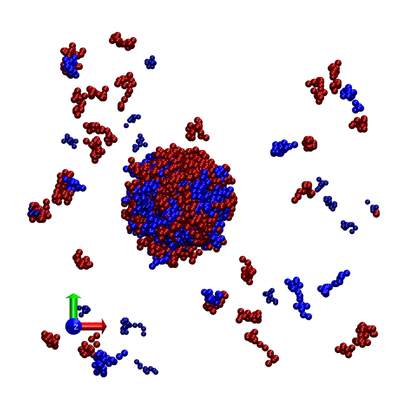Surfactants stabilizing surfaces of cellular droplets
Methods: Statistical physics, molecular dynamics, monte carlo, lattice simulations
Biomolecular condensates are a newly defined class of organelle in the cell. In contrast to the classical picture of a cellular organelle, there is no membrane separating the inside from outside. Instead, they form through the physics of proteins phase separating into droplets similar to oil demixing from water. Similar to how soaps can act as a surfactant stabilizing oil:water interfaces, there is a growing interest in the idea that proteins can act as a surfactant to stabilize protein droplets in cells.
In this project we will develop the theoretical frameworks that are relevant for protein scale surfactants and study how these surfactants could be used in cells. Several topics of note are to what extent this can stabilize specific sizes of droplets, how much can this reduce cell-to-cell variability, and if these interfaces can reduce how freely the droplet can exchange material with the bulk around it.

The key tasks for this project are:
- Run simulations of droplets and surfactants with different ratio of components and other heteropolymer architectures to study how well the behavior fits changes in surface tension.
- Build models for how the system should behave at high surfactant concentration and different curvatures.
- Examine how molecules pass through the surfactant layer and if we can design surfactants that increase this barrier.
Keywords: biomolecular condensates, surfactants, synthetic biology
References:

